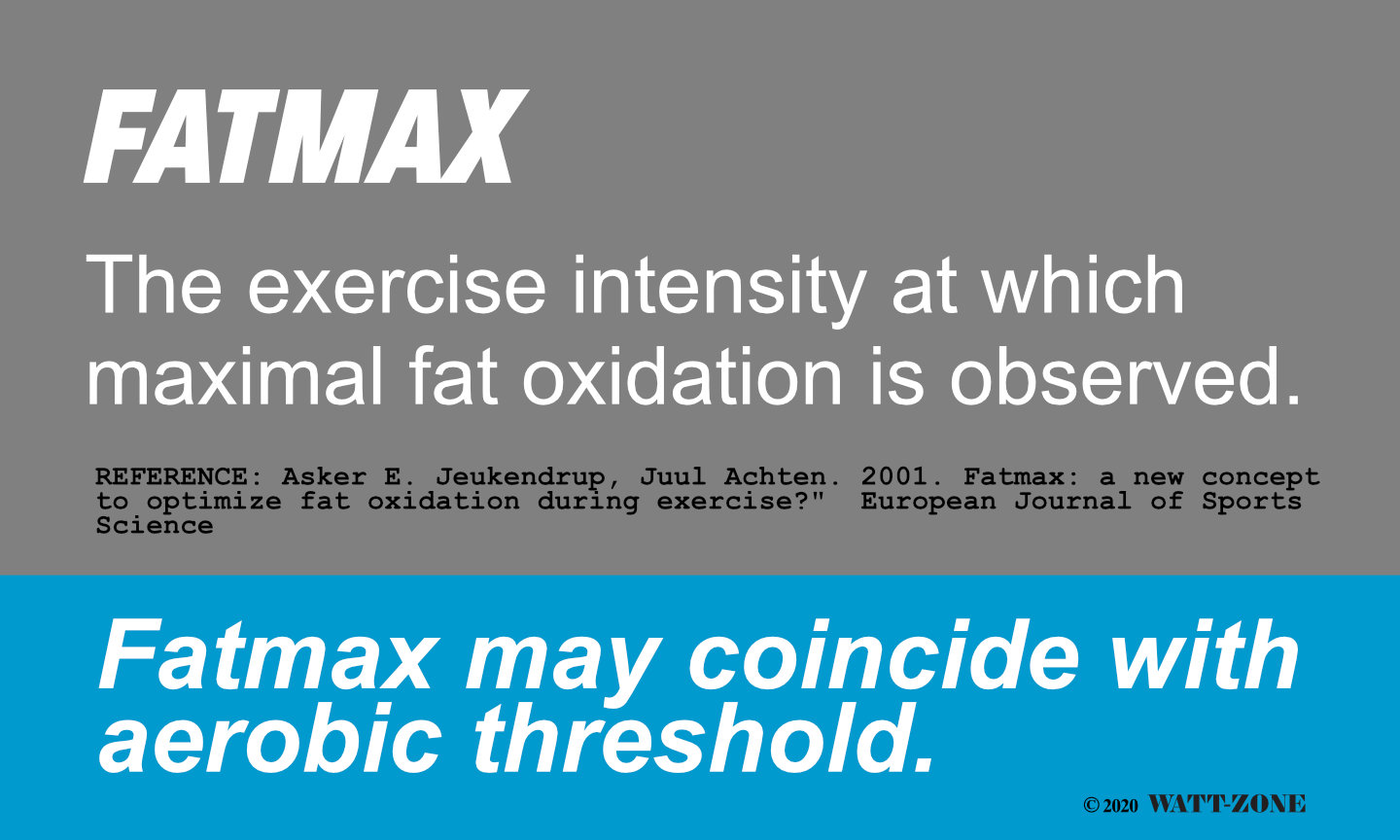In the review “Fatmax: a new concept to optimize fat oxidation during exercise?” Asker E. Jeukendrup, Juul Achten. 2001 European Journal of Sports Science, the authors give a brief overview of the concept of Fatmax with the aim of expanding the boundaries of thinking in relation to fat metabolism and exercise. They highlight the following points:
- the facilitation of fat metabolism is important for performance
- in absolute terms, carbohydrate oxidation will increase proportionally with exercise intensity
- the rate of fat oxidation will initially increase with intensity but will decrease at high exercise intensities
- Fatmax is defined as the exercise intensity at which maximal fat oxidation is observed
Importantly it is stated that “at intensities where the rate of glycolysis has increased considerably (at intensities above lactate threshold) relatively less fatty acids will be used, and although energy expenditure is increasing, absolute rates of fat oxidation will actually decrease.”
As athletes venture more towards ultra-endurance events, and multi-day events the idea of utilizing fat more efficiently, and training to utilise fat has become more important. The authors speculate that given “fat oxidation is directly dependent on the rate of glycolysis, Fatmax might coincide with the onset of blood lactate accumulation.” This had not been proven, at the time the article was written, but it is implied that training at LT1 or OBLA may be beneficial for training Fatmax.
Asker E. Jeukendrup, Juul Achten. 2001. Fatmax: a new concept to optimize fat oxidation during exercise?” European Journal of Sports Science.

